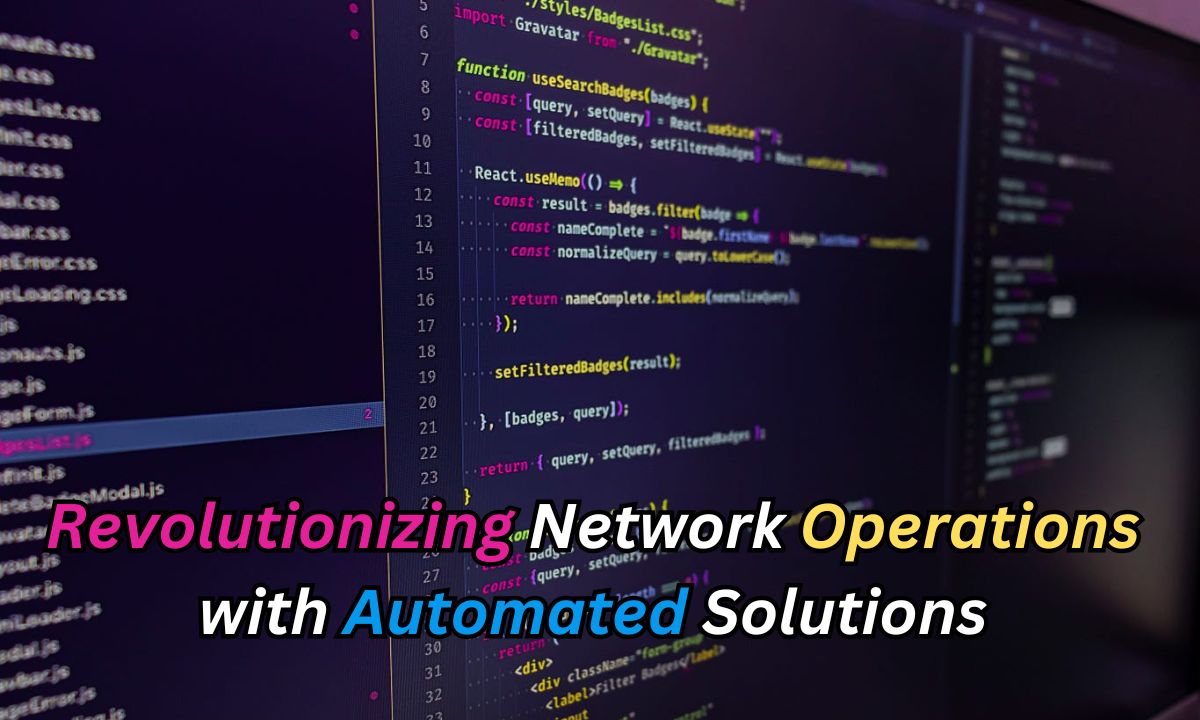Network operations are undergoing a revolutionary transformation through automated solutions, with ReactJS emerging as a pivotal technology in this evolution.
This powerful JavaScript library is reshaping how organizations manage and monitor their network infrastructure, offering real-time visualization, seamless integration capabilities, and enhanced user experiences.
By leveraging ReactJS’s component-based architecture and efficient rendering mechanisms, businesses are achieving unprecedented levels of network automation, leading to improved operational efficiency and reduced manual intervention in their day-to-day network management tasks.
The Evolution of Network Operations
Traditional network operations relied heavily on manual intervention and command-line interfaces. Network administrators spent significant time performing repetitive tasks and troubleshooting issues.
The growing complexity of modern networks made manual management increasingly difficult and error-prone. Automation emerged as the natural solution to these challenges, enabling more efficient and reliable network operations.
Legacy systems often struggled with scalability and real-time monitoring capabilities. The transition to automated solutions marked a crucial turning point in network management evolution. Efficiency became a primary focus as organizations sought to streamline their operations. Modern network operations now emphasize proactive management and automated response systems.
Why ReactJS for Network Automation?
ReactJS brings revolutionary capabilities to network automation through its innovative architecture. The framework’s design principles align perfectly with the demands of modern network operations.

Performance and scalability stand out as key advantages in implementing ReactJS solutions. Organizations benefit from improved development efficiency and maintainable code structures.
The framework’s robust ecosystem supports comprehensive network management solutions. Developer productivity increases significantly with ReactJS’s intuitive development model.
Integration capabilities enable seamless connection with existing network infrastructure. The framework’s flexibility allows for customization according to specific organizational needs.
Real-Time Data Visualization
ReactJS excels in presenting complex network data through dynamic visualizations. Network metrics update instantly, providing administrators with current operational status.
The virtual DOM ensures smooth rendering of rapidly changing network information. Monitoring becomes more intuitive through clear visual representations of network activities.
Real-time dashboards enable quick identification of network issues or anomalies. Performance metrics display instantly through efficient state management mechanisms. Network administrators can track multiple parameters simultaneously. Visual alerts highlight critical network events requiring immediate attention.
Component-Based Architecture
The component-based structure enables modular development of network management tools. Each functional element exists as an independent, reusable component.
This architecture promotes code organization and maintenance efficiency. Reusability reduces development time for new features or modifications.
Components can be tested independently, ensuring reliable network management tools. Updates to specific functions don’t affect the entire system. The modular approach simplifies troubleshooting and bug fixes. Development teams can work on different components simultaneously.
Seamless Integration with APIs
ReactJS facilitates smooth integration with various network management APIs. Data flows efficiently between different network systems and monitoring tools.
The framework handles complex API interactions with minimal configuration. Connectivity between different network management tools becomes straightforward.
API integration enables comprehensive network monitoring and control. Real-time data updates maintain system synchronization. Multiple data sources combine into unified management interfaces. Custom integrations address specific organizational requirements.
Enhanced User Experience (UX)
Intuitive interfaces simplify complex network management tasks. Administrators interact efficiently with network monitoring and control systems.
The responsive design ensures accessibility across different devices. Usability improvements reduce operational errors and training time.
Clear visual feedback confirms successful network operations. Interactive elements respond instantly to user actions. Customizable layouts accommodate different user preferences. The enhanced UX promotes efficient network management practices.
READ THIS BLOG: Demystifying Cloud Trends: Statistics and Strategies for Robust Security
Case Study: Automating Network Management with ReactJS
A multinational corporation implemented ReactJS-based network automation tools. Their network operations transformed through custom visualization and control interfaces.

Productivity increased significantly after implementing the new system. Error rates decreased while response times improved dramatically.
The organization reported substantial cost savings through automated operations. Network administrators handled larger infrastructures more efficiently. Automated monitoring reduced incident response times. The success demonstrated ReactJS’s practical benefits in network automation.
The Future of Network Operations with Automation and ReactJS
Network automation continues evolving with emerging technologies. ReactJS adaptation follows changing operational requirements.
Artificial intelligence integration becomes increasingly important. Innovation drives development of more sophisticated management solutions.
Machine learning algorithms enhance network monitoring capabilities. Predictive analytics help prevent network issues before they occur. Automated responses handle routine network events independently. The future promises even greater operational efficiency through automation.
Frequently Asked Questions
How does ReactJS improve network automation efficiency?
ReactJS enables real-time monitoring, efficient data visualization, and automated responses through its component-based architecture and state management capabilities.
What makes ReactJS suitable for network management interfaces?
Its virtual DOM, component reusability, and seamless API integration create responsive and maintainable network management solutions.
Can ReactJS handle complex network monitoring requirements?
Yes, ReactJS efficiently manages multiple data streams and complex visualizations while maintaining high performance.
How does component-based architecture benefit network operations?
It enables modular development, easier maintenance, and reusable components that accelerate development and updates.
What future developments can we expect in ReactJS network automation?
Integration with AI, machine learning, and predictive analytics will enhance automated network management capabilities.
Conclusion
ReactJS revolutionizes network operations through powerful automation capabilities. The technology enables efficient, scalable, and reliable network management solutions.
Automation remains essential for modern network operations success. Organizations benefit from improved operational efficiency and reduced manual intervention.The integration of ReactJS in network automation represents significant progress.
Its impact on operational efficiency proves transformative for many organizations. Network management continues evolving with technological advances. The role of ReactJS in shaping future network operations grows increasingly important.

David is a seasoned SEO expert with a passion for content writing, keyword research, and web development. He combines technical expertise with creative strategies to deliver exceptional digital solutions.
















